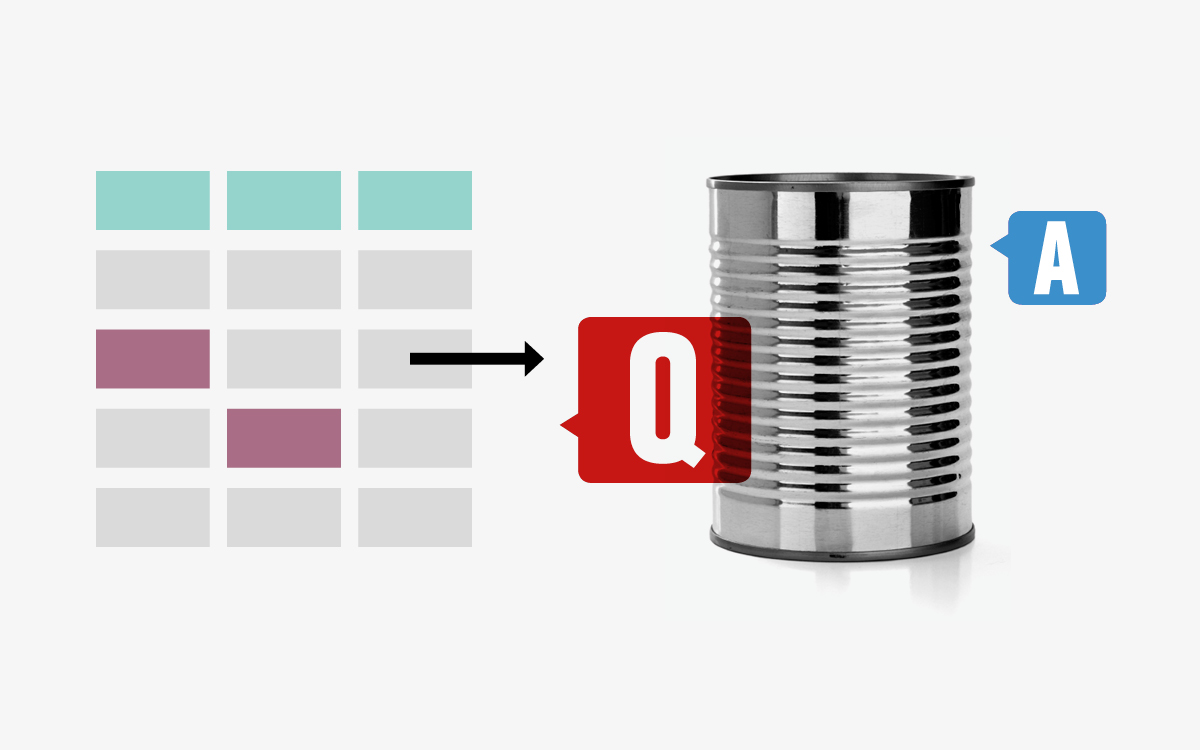In today’s digital age, we’re constantly bombarded with information about new apps, transformative technologies, and the latest and greatest artificial intelligence system. While these technologies may serve very different purposes in our life, all of them share one thing in common: They rely on data. More specifically, they all use databases to capture, store, retrieve, and aggregate data. This begs the question: How do we actually interact with databases to accomplish all of this? The answer: We use Structured Query Language, or SQL (pronounced “sequel” or “ess-que-el”).
Put simply, SQL is the language of data — it’s a programming language that enables us to efficiently create, alter, request, and aggregate data from those mysterious things called databases. It gives us the ability to make connections between different pieces of information, even when we’re dealing with huge data sets. Modern applications are able to use SQL to deliver really valuable pieces of information that would otherwise be difficult for humans to keep track of independently. In fact, pretty much every app that stores any sort of information uses a database. This ubiquity means that developers use SQL to log, record, alter, and present data within the application, while analysts use SQL to interrogate that same data set in order to find deeper insights.
Finding SQL in Everyday Life
Think about the last time you looked up the name of a movie on IMDB. I’ll bet you quickly noticed an actress on the cast list and thought something like, “I didn’t realize she was in that,” then clicked a link to read her bio. As you were navigating through that app, SQL was responsible for returning the information you “requested” each time you clicked a link. This sort of capability is something we’ve come to take for granted these days.
Let’s look at another example that truly is cutting-edge, this time at the intersection of local government and small business. Many metropolitan cities are supporting open data initiatives in which public data is made easily accessible through access to the databases that store this information. As an example, let’s look at Los Angeles building permit data, business listings, and census data.
Imagine you work at a real estate investment firm and are trying to find the next up-and-coming neighborhood. You could use SQL to combine the permit, business, and census data in order to identify areas that are undergoing a lot of construction, have high populations, and contain a relatively low number of businesses. This might be a great opportunity to purchase property in a soon-to-be thriving neighborhood! For the first time in history, it’s easy for a small business to leverage quantitative data from the government in order to make a highly informed business decision.
Leveraging SQL to Boost Your Business and Career
There are many ways to harness SQL’s power to supercharge your business and career, in marketing and sales roles, and beyond. Here are just a few:
- Increase sales: A sales manager could use SQL to compare the performance of various lead-generation programs and double down on those that are working.
- Track ads: A marketing manager responsible for understanding the efficacy of an ad campaign could use SQL to compare the increase in sales before and after running the ad.
- Streamline processes: A business manager could use SQL to compare the resources used by various departments in order to determine which are operating efficiently.
SQL at General Assembly
At General Assembly, we know businesses are striving to transform their data from raw facts into actionable insights. The primary goal of our data analytics curriculum, from workshops to full-time courses, is to empower people to access this data in order to answer their own business questions in ways that were never possible before.
To accomplish this, we give students the opportunity to use SQL to explore real-world data such as Firefox usage statistics, Iowa liquor sales, or Zillow’s real estate prices. Our full-time Data Science Immersive and part-time Data Analytics courses help students build the analytical skills needed to turn the results of those queries into clear and effective business recommendations. On a more introductory level, after just a couple of hours of in one of our SQL workshops, students are able to query multiple data sets with millions of rows.
Ask a Question About Our Data Programs
Meet Our Expert
Michael Larner is a passionate leader in the analytics space who specializes in using techniques like predictive modeling and machine learning to deliver data-driven impact. A Los Angeles native, he has spent the last decade consulting with hundreds of clients, including 50-plus Fortune 500 companies, to answer some of their most challenging business questions. Additionally, Michael empowers others to become successful analysts by leading trainings and workshops for corporate clients and universities, including General Assembly’s part-time Data Analytics course and SQL/Excel workshops in Los Angeles.

“In today’s fast-paced, technology-driven world, data has never been more accessible. That makes it the perfect time — and incredibly important — to be a great data analyst.”
– Michael Larner, Data Analytics Instructor, General Assembly Los Angeles
